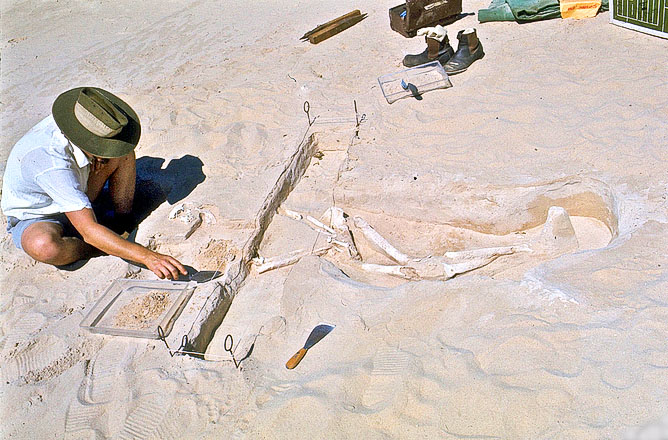Climate Change’s Impact on Australian Lakes and Ancient Discoveries
Climate change has left its mark on the world in various ways, both in shaping landscapes and preserving traces of our distant past. This article delves into two Australian lakes, Lake Mercer and Lake Mungo, which have experienced contrasting fates due to climate change. While Lake Mercer was created and preserved by climate change, Lake Mungo faced its demise as the region became more arid. These lakes hold invaluable insights into ancient human history, including the discovery of footprints dating back 20,000 years and the remains of Mungo Man and Mungo Woman, shedding light on the deep history of indigenous Australians.
Lake Mercer, located in a remote region of Antarctica, is a unique example of a lake formed and maintained by climate change. Rising temperatures in the area have caused ice to melt, creating this large subglacial lake. Scientists have been able to study the lake’s water and sediments to gain insights into Earth’s past climate conditions, which is crucial for understanding ongoing climate change.
Contrastingly, Lake Mungo in Australia faced a different fate due to climate change. As the region became increasingly arid, the lake gradually shrank and became more alkaline. Ultimately, Lake Mungo dried up entirely several thousand years ago. This dramatic change in the landscape had profound consequences for the indigenous people who relied on the lake for sustenance.
In the dried mud of Lake Mungo’s former bed, archaeologists have made remarkable discoveries. Footprints dating back 20,000 years have been preserved, offering a rare glimpse into the lives of ancient inhabitants. Some footprints show children and adolescents moving together, providing insights into family dynamics and social structures. Another set of footprints suggests hunters moving swiftly, including a one-legged individual who hopped alongside the group, highlighting the adaptability and resourcefulness of these ancient people.
Renowned Australian geologist Jim Bowler made an extraordinary discovery at Lake Mungo around 40,000 years ago—two sets of ancient human remains. These individuals, aptly named Mungo Man and Mungo Woman, represent some of the earliest evidence of human habitation in Australia. Mungo Woman is also significant for being the earliest-recorded cremation found anywhere in the world, shedding light on ancient burial practices.
The remains of Mungo Man and Mungo Woman were initially taken from their discovery site for further scientific study. However, in recent years, they have been returned to representatives of the indigenous groups who consider them ancestors. This repatriation acknowledges the cultural and spiritual significance of these remains to the local Aboriginal communities and highlights the importance of respecting and preserving indigenous heritage.
The stories of Lake Mercer and Lake Mungo showcase the complex relationship between climate change and our planet’s history. While Lake Mercer provides valuable scientific insights into past climate conditions, Lake Mungo’s transformation and the discoveries made within its dried mud offer a unique window into ancient human civilizations, challenging our understanding of the depth of indigenous Australian history. The repatriation of Mungo Man and Mungo Woman demonstrates the importance of cultural preservation and respect for indigenous heritage in the face of such discoveries.
Hits: 6



